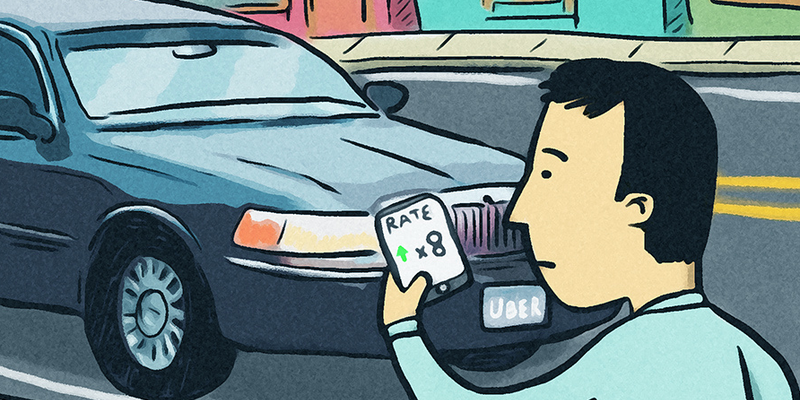

Hannah Charney is a New Hampshire native enjoying the Southern way of life while earning a BA in Communications, with minors in Dance and Spanish, from the College of Charleston. She is a former editorial intern for Charleston Magazine who spends her free time performing with local dance company DanceFX, daydreaming about her “Travel” Pinterest board, and sipping on $3 glasses of wine at happy hour. Post-graduation, Hannah hopes to spend some time teaching English in Thailand and ultimately handling PR for a non-profit arts organization.
Uber had some seriously angry customers on its hands last month when rates suddenly skyrocketed on Halloween night. A man in Denver, Colorado, paid $539 for an 18-mile ride, while a Baltimore woman used crowdfunding to help pay her rent after she inadvertently racked up a $362 Uber charge.
The popular app that connects riders with drivers in their area has rapidly become a modern, safe, and convenient alternative to taxicabs. Operating in over 200 cities across the globe, the program uses your smart phone’s GPS signal to match you with the nearest available driver, who will pick you up in their own vehicle and take you anywhere you need to go. Once you reach your destination, the fare is automatically charged to your credit card—no need for cash!
So, how much does an Uber ride typically cost? According to their website, the company charges a base fare of $1.95, then adds 20¢ per minute and $1.75 per mile, as well as a $1 safe rides fee. As an Uber customer myself, I have often used the service to get home from the bars on Upper King and typically pay around $7. Why, then, did that same ride cost me more than $50 last weekend?
“Surge pricing” is a tool that increases rates by a certain factor when there is a high demand for cars in order to provide drivers with an incentive to work on busy nights. On any given Saturday night, the rate might increase one and a half times or maybe even double, but Charleston saw an increase of almost ten times the normal rate on Halloween night.
The app does a good job of notifying users about surge prices before they request a car, but the problem is that riders won’t know for sure how much they are actually paying until they get to their destination, and at that point, their card has already been charged. Another problem is that there is no limit to the amount a ride can cost during times of surge pricing.
Uber CEO Travis Kalanik has defended the practice time and again, ensuring that it won’t stop anytime soon, so I began researching other companies that offer a similar service.
GetTaxi is an up-and-coming car-hailing app that uses a much simpler price model, charging fixed prices between different neighborhoods and tacking on only a $5 to $10 fee during peak hours and inclement weather. As of right now, it’s only available in cities like London, Moscow, and NYC, but in 2013, it was featured as one of Forbes’s “15 explosively growing companies to watch this year.”
If the high-tech stuff just isn’t for you and you need simple, reliable transportation, Charleston Green Taxi is the way to go. With great customer service and low rates, you can reach your destination quickly and safely, while simultaneously reducing your carbon footprint.
If you’re still an Uber customer but don’t want to get caught in the trap of surge prices, “SurgeProtector” might offer some relief. The free mobile app attempts to find a location close to you that is not currently affected by surge pricing. In some cases, customers may be able to walk a few blocks in order to catch a cheaper ride.
The next time you head out for a night on the town but don’t want to get slammed with Uber’s surge prices, check out one of these options. You’ll thank yourself the next morning.